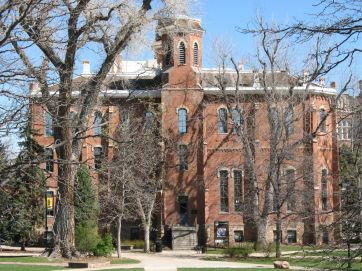October is a month in which for some reason, everyone seems to relish the morbid and the gruesome. Halloween-lovers make the most of the days leading up to the 31st. They flock to dark haunted house attractions which use lighting, sound effects, and heavily made-up actors to produce illusions of zombies, spirits, “crazed animals or escaped murderers.”
I have never understood why people will voluntarily submit themselves to these simulated terrors—but the entrepreneurial haunted house creators do. America Haunts© estimates that there are over 1,500 haunted attractions in the United States, luring 12,000,000 visitors per year. The haunted industry is a thriving business.
Why do scary experiences appeal to us? It’s not that we like to be scared so much as it is that we like to conquer fear. When faced with danger, whether real or apparent, our survival instincts kick in and make us want to confront and endure the situation. We get a thrill of empowerment when we “make it” through.
Well, coinciding with haunted pre-Halloween festivities, several universities are presenting their own eerie event. Western Michigan University, Southwest Minnesota State University, and Loyola University are all hosting “The Tunnel of Oppression” this week. WMU and SMSU’s tunnels closed after Wednesday, but Loyola’s is still open tonight, from 5-9. According to the Loyola diversity office, this evening’s tunnel of oppression will include three 20-30 minute skits performed in succession that will “discover or explore different ‘isms’ of oppression, racism, and discrimination.” Following the skits is a “multimedia walkthrough presentation” about “behaviors we would consider discrimination.”
Tunnels of oppression are not new. The first one was in 1993 at Western Illinois University; the tunnel concept was modeled after the Museum of Tolerance in Los Angeles, California. Since then, the grassroots diversity movement has been tunneling through the United States and coming up on campuses nationwide. The tunnel typically is set up as a sort of gallery for visitors to walk through. It often contains skits that portray disturbing scenes of “the dirtiest, ugliest, bloodiest issues” such as rape, KKK threats, and violence toward homosexuals.
Brittany Tedeschi, a student who helped put together the University of Miami tunnel, said:
We’re in our own little campus bubble and we don’t really know what’s going on half the time. It’s a way for us to think about the issues that are going on in the world as well as how we can do something about them, as well as how we might be oppressing others through our language, through things that we do every day that we don’t really think about.
The tunnel’s purpose is to create a visceral reaction in spectators. The name "tunnel of oppression" evokes thoughts of claustrophobia and cave-ins; and the designers really do want participants to cave in. Going through a tunnel of oppression must remove people from their “comfort zone” and cause them to change their preconceived ideas about hate. Properly tunneled, visitors undergo a kind of catharsis, an ‘aha!’ moment, in which they realize they need to take action.
At the University of Arizona, participants conclude the tunnel by “pledging to stop hate on campus” and pasting their pledges in the “Hall of Happiness.” Many tunnels end with a discussion time, so students can talk about how the experience made them feel.
How does it make them feel? University of Maryland posted online what students wrote on the “reaction wall” from Tunnel of Oppression 2007. Here are a few:
- I feel sick, disturbed and slightly outraged…but I’m going to return and finish the exhibit.
- I am unaware of my own white privilege
- Why am I learning organic molecules again? Why aren’t we learning this? Why isn’t this a CORE requirement?
- CLEARLY I HAVE NOT BEEN EDUCATED. I thought college was about learning and discovering
- I second that thought about being educated for the past 18 years all of that is BS. The real stuff is not in the classroom.
Students wanted to bring “the real stuff” to the classroom and put aside learning “BS” material like organic molecules. Strange that they are unaware of the bounty of classes that focus entirely on racism, oppression and “the dirtiest, ugliest, bloodiest issues.” And there are some college classes that make a visit to the tunnel of oppression a course requirement.
U Arizona took a step farther and created a two-credit course sponsored by the education department, “EDL 281 - Event Planning and Leadership/The Tunnel of Oppression.” According to the University’s student newspaper Daily Wildcat, “The class was proposed by both the Center for Student Involvement and Leadership and Amanda Kraus, Residence Life coordinator of graduate and international housing.” Natalie Boras, a psychology student, said, “It’s kind of like community service in a class.”
But let us return to the corridors of the tunnel, where many students have been genuinely sickened, many frightened. At Arizona’s 2002 Nazi execution chamber simulation: “one student taking the tour was so frightened by the guards' force and yelling in her face that she broke down in tears and fell to the ground.”
Erin O’Connor poignantly assessed:
The Tunnel of Oppression takes the concept of shock value to extremes, using overblown melodrama as an agent of social change, and recruiting people to its cause by subjecting them to simulated short-term trauma—which it then conveniently tells them how to understand in the handy group therapy session that forms the final stop of the tour. It's manipulative, it's anti-intellectual, and it's—paradoxically—every bit as cynical and consumerist as the society it claims to deplore.
Perhaps the tunnel of oppression is not very different in concept from the haunted house. Both require a sort of bravado and revelry in darkness, and both offer twistedly therapeutic encounters. But the tunnel means to humble its participants—not to thrill but to break them. Still, it leaves them feeling haunted.
So I challenge you: if you hear about a Tunnel of Oppression on a campus near you, go on, take the tour...if you dare.













